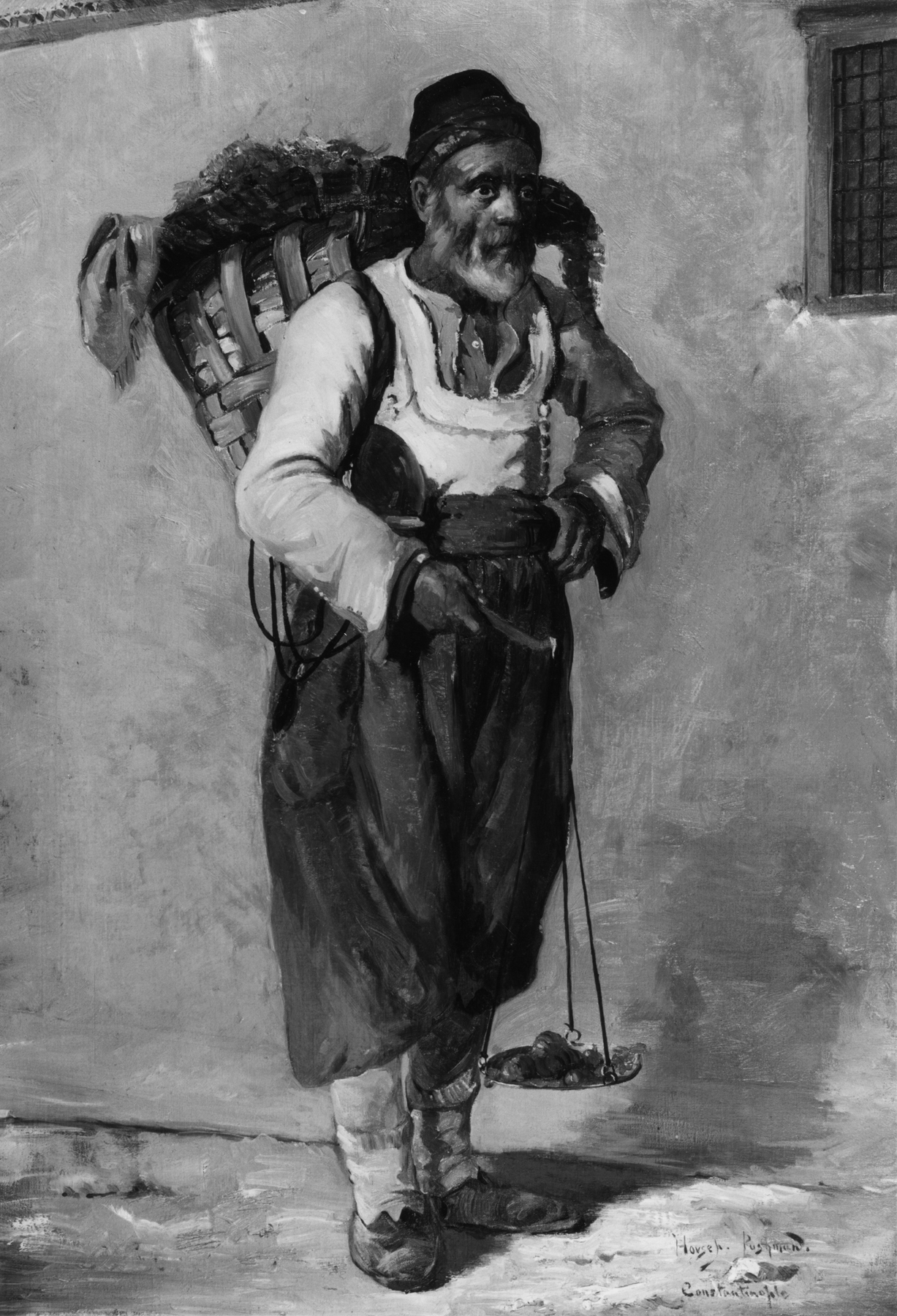Turkish Fruit Vendor
Hovsep Pushman was born in Armenia in 1877 and later became a naturalized American citizen. At age 11, he held a scholarship at the Constantinople Academy of Art. By 17, he had gone to the United States and started teaching art in Chicago. He studied the culture of China, immersing himself in oriental art and perhaps philosophy. He then studied in Paris under Lefebvre, Robert-Fleury and Dechenaud. Pushman exhibited his work at the Salon des Artistes Francais in Paris, winning a bronze medal in 1914 and a silver medal in 1921. He also was awarded the California Art Club's Ackerman Prize in 1918. In this painting, Pushman shows a white-bearded Turkish fruit vendor peddling his wares. Walking along a dirt street, the man stands in front of a wall, on which a barred window is visible at the upper right. He wears baggy pants, a long-sleeved shirt, and a small cap. A basket is strapped to his back and a scale hangs at his side as he holds one hand out, imploring passersby to stop and purchase his wares.
Provenance
Provenance (from the French provenir, 'to come from/forth') is the chronology of the ownership, custody, or location of a historical object. Learn more about provenance at the Walters.
Mr. Henry Burke, Baltimore; given to the Walters Art Museum, 1980.
Measurements
Overall: 24 15/16 x 19 11/16 in. (63.4 x 50 cm)
Credit Line
Gift of Mr. Henry Burke, 1980
Location in Museum
Not on view
Accession Number
In libraries, galleries, museums, and archives, an accession number is a unique identifier assigned to each object in the collection.
In libraries, galleries, museums, and archives, an accession number is a unique identifier assigned to each object in the collection.
37.2570


